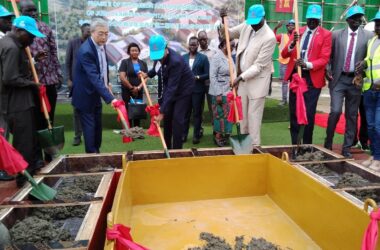By Manas James Okony
In a significant step towards fostering peace and reconciliation, rival youth groups in the Greater Pibor Administrative Area (GPAA) have been urged to abandon violence and cultivate a spirit of peaceful coexistence.
This call for harmony emerged during a three-day peace conference held in Likuangole Town, which wrapped up on Friday, bringing together youth representatives from the historically antagonistic Bebuzen and Kongoor villages.
The conflict between these two youth factions is deeply rooted and has seen a painful history of violent feuds.
The tensions reached a tragic peak last December when clashes resulted in the loss of at least 12 lives and left several cattle raided—an event that highlighted the urgent need for dialogue and reconciliation among the youth.
This cycle of violence has not only disrupted the social fabric of the communities involved but has also perpetuated a culture of fear and mistrust.
In an interview with the No. 1 Citizen Daily Newspaper after the signing ceremony, James Nyicho, the head of the peace commission in the GPAA, expressed optimism about the resolution of this long-standing blood feud.
He emphasized the historic nature of the agreement. “The two sides have agreed to bury the hatchet, marking a significant milestone.”
Nyicho detailed the terms of the agreement, stating, “It was resolved that the stolen cattle be returned by either side, there be free movement among age sets, there be social interactions, and that customary courts be established to handle any cases that may arise.”
Many similar agreements were signed in the past but often go unimplemented. These recent measures, if materialized, aim not only to resolve immediate grievances but also to foster an environment of trust and collaborative governance.
In the context of the Murle people as is for other communities in the region, the transition from childhood to youthhood is a culturally significant rite of passage.
Traditionally, this progression is marked by elaborate celebrations and rituals that signify maturity.
However, for the Murle, this transition can take a perilous turn. Newly initiated youths frequently engage in violent confrontations with older age sets as a means to assert their strength and dominance. Established age sets, in turn, are compelled to defend their authority and privileges, such as community security and dating rights, leading to a vicious cycle of conflict.
Jacob Werchum Jouk, the GPAA Information Minister, reflected on the hopeful outcome of the conference.
“Peace is within reach as youth have agreed to peacefully coexist. Approximately 700 youth from the two villages attended the conference, driven by the desire to resolve the deadly feuds stemming from last December’s cattle raids,” he remarked.
He further affirmed that the agreement calls on rival age sets to let go of past grievances and create a new chapter based on harmony, which includes the restitution of all stolen cattle and the commitment to report any criminal activities.
The peace conference represents a crucial turning point not only for the youth involved but for the broader community in the Greater Pibor Administrative Area and beyond.
By actively engaging in dialogue and establishing mechanisms for conflict resolution, the Murle people have the opportunity to break free from the cycles of violence that have long plagued their society, paving the way for a more peaceful and cohesive future.



